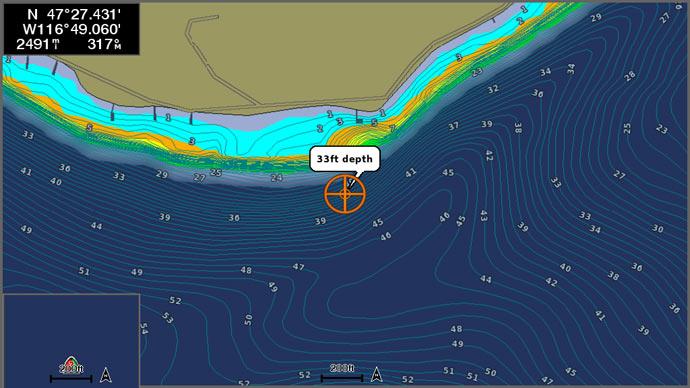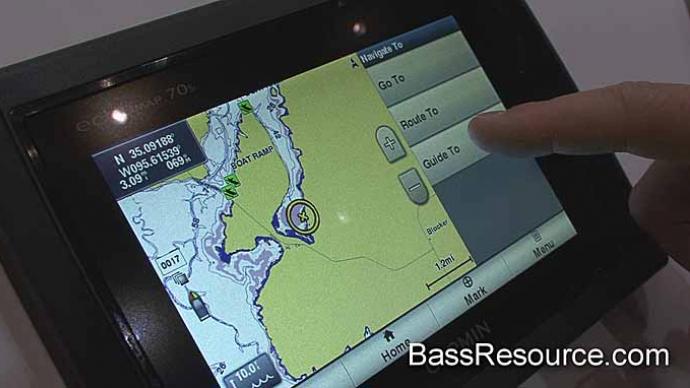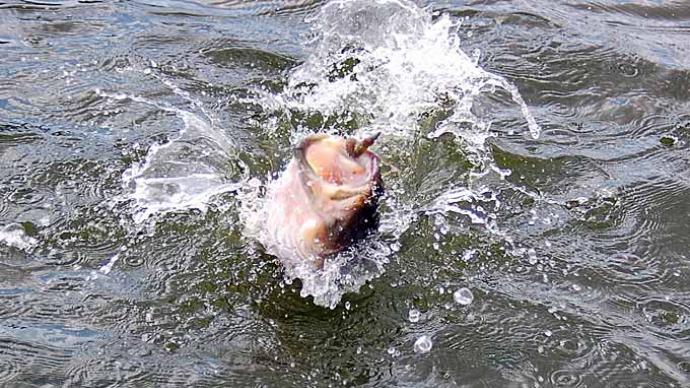
Maps are the one thing in your bass fishing arsenal you should never leave home without. Even though I have guided Ray Roberts for over ten years and have studied numerous maps of the lake for hours on end, I still, to this day, carry a map of the lake with me in the boat every trip.
Sometimes, you will be surprised by things you've missed or what secrets this critical document can reveal. Of course, you can't know everything there is to know about a lake, and of course, there's no substitute for time spent on the water, but some of my best fishing spots are ditches and drops I found just by going back to my map. They were there all along, just waiting for me to find them. Finding these hidden locations has kept my map study more serious and helped speed up the process of finding good holding areas for bass.
The first step in the process is buying your map. And that's where a lot of anglers make their first mistake. All maps are not made equal by a long shot. The best maps by far are the topographical ones. There are a lot of maps that show the general layout of a lake. They'll show contour lines, like depth, roads, cities, marinas, motels, and ramps. That's good, but when it comes to helping you find bass, I've never caught one in a motel room.
The maps you want to purchase are the ones that show what the land was like before the lake was built. You want every pond, roadbed, fence row, tree line, creek, and old house site to be on your map. Every one of these things could be your next honey hole, and the easy way to find them is to study your map.
Opening up your map can be intimidating, but think only about a tiny part of the map, the area you'd like to learn more about, and what season of the year you'll be there. For example, if your trip is in the summer, you can eliminate, for the most part, the upper reaches and large flats. But on the other hand, if your trip is in the spring, these would be the areas you would look for first.
Study your map before you leave home, and pick out some areas before you arrive at the lake. Look for contour lines that are close together. This will tell you that there's a drop-off or steep bank there. Look for roadbeds. They usually have a ditch alongside them, which can be a good hot spot.
I always look for something different about the area that I'm studying. For example, on a large flat, look for a fence row that crosses it or an old home site on the flat. Old house foundations are excellent bass structure. A good map will also show you the trees that might be under the surface. I'll often look for an old tree line that borders a field. These areas can hold some big schools of bass, but remember that the whole tree line won't be holding fish. You must look for a hump or old pond dam along the tree line. That's the spot that will be most productive for you.
There are a few things that I'll do with maps that might help you as well. First, not all maps are waterproof, so I put clear contact paper on them. This helps make them waterproof, and you can still fold them. Few of the best maps come waterproof, so this helps.
I'll have two maps of the lake on a lake where I intend to spend a lot of time fishing. I mark with a highlighter areas that I feel are worth checking out and even write any information I feel is important right on the map. Other maps I leave free of marks and keep at home for studying. That way, I won't be covering up a potential hot spot. Another thing I do is, highlight all the ponds in blue, roadbeds in yellow, humps in orange, and tree lines in green. This color coding is an excellent way to know what I'm looking at at a glance. It helps for use when running down the lake. Sometimes I even use Post-It notes on my maps to remind me of something I want to check out.
While we aren't likely to ever know everything about bass fishing, maps help us take a lot of guesswork out of searching for them. It can make your trip much easier, but it won't if you leave home without it.
Bill Wilcox is sponsored by Ranger Boats, Yamaha Outboards, MCMC, BG Products, Pro Rule, Johnson Fiberglass, Brown's Automotive, Continental Batteries, Kistler Rods, Swamp Hog Lures, Strike King Lures, Fun-n-Sun Sports Center.




